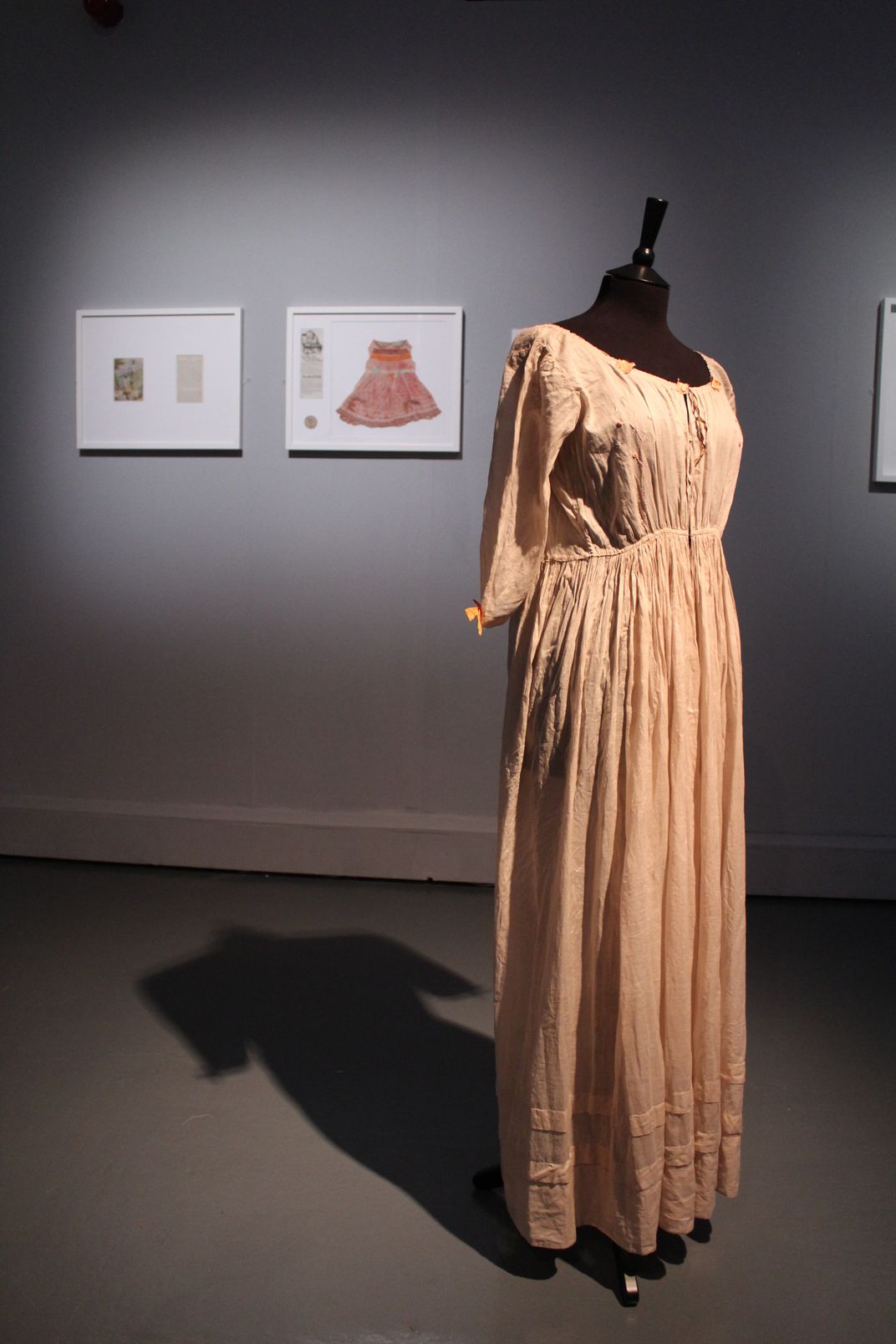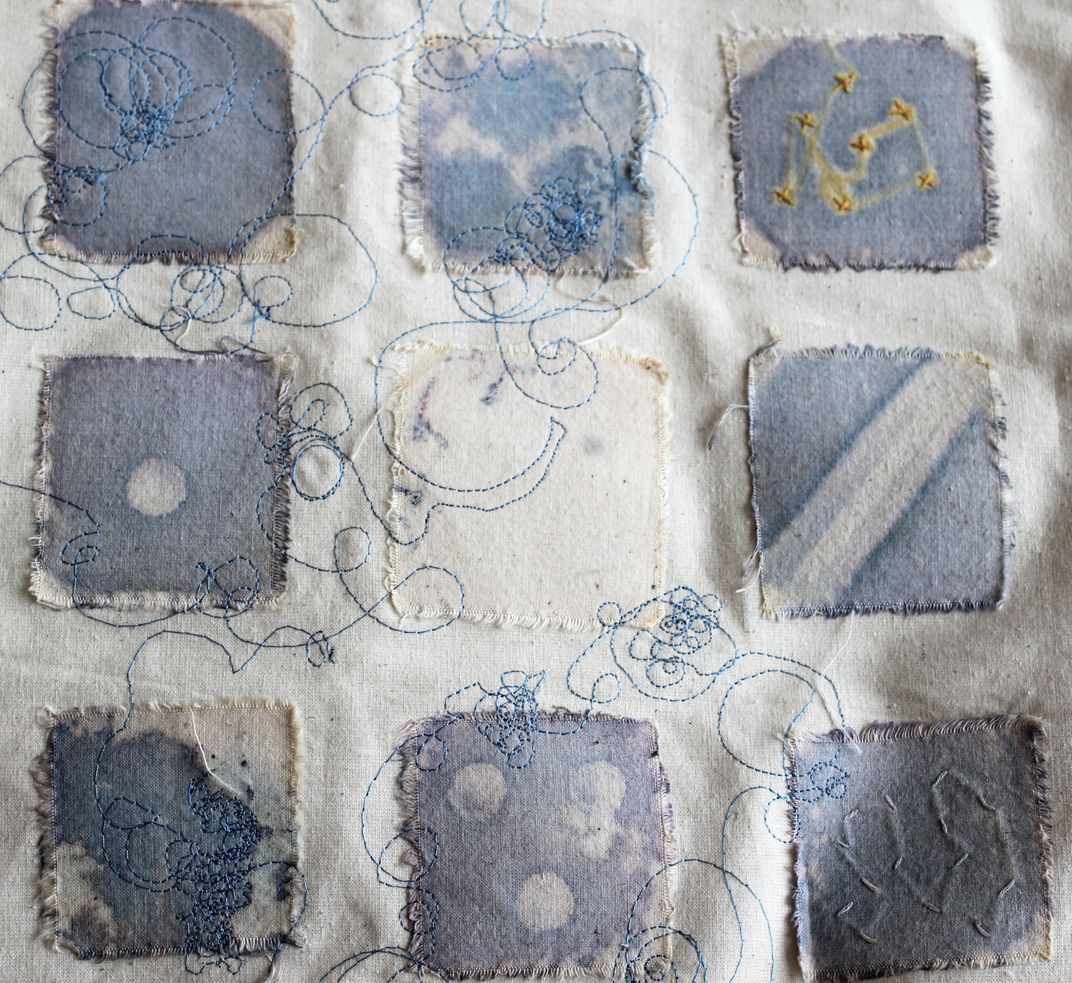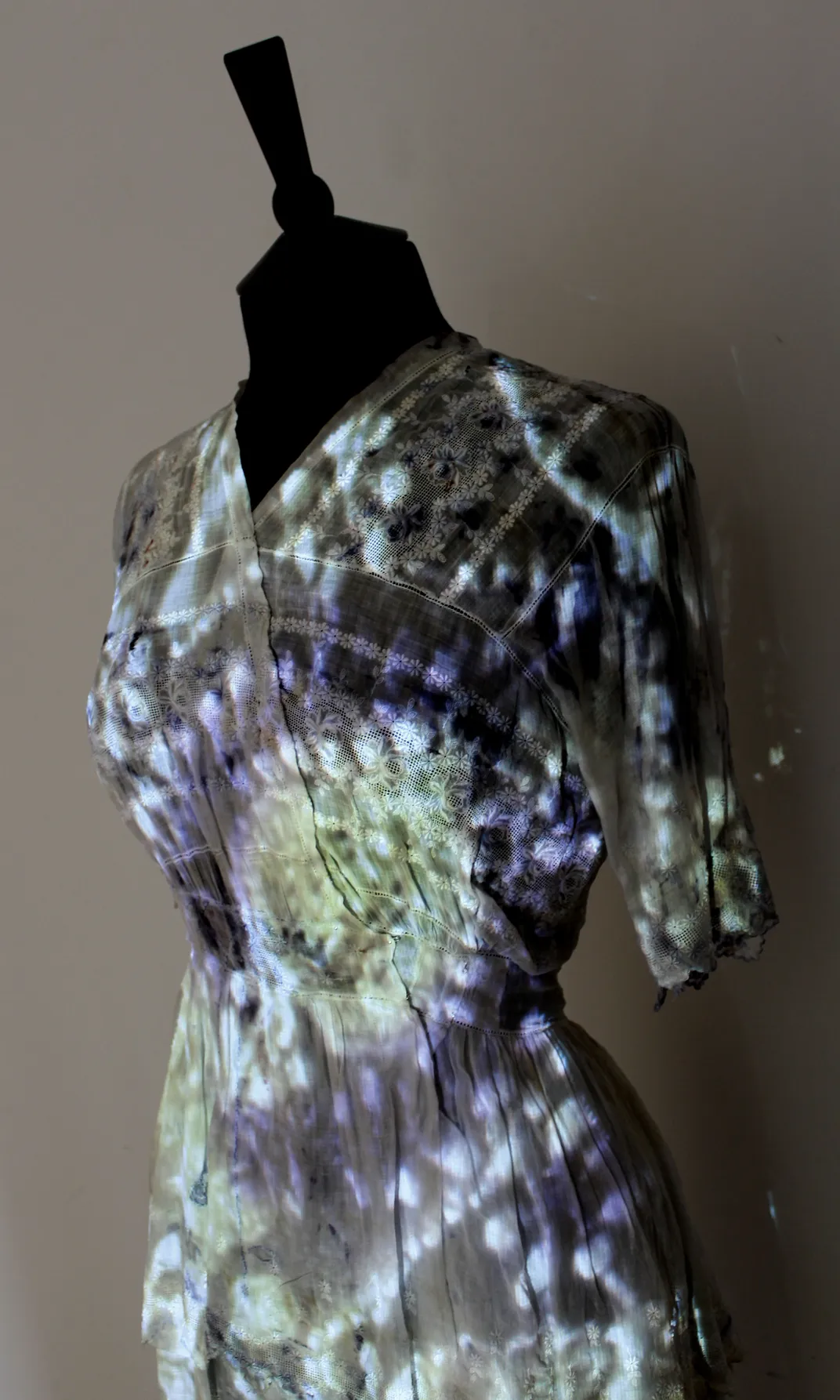An Artist Dyes Clothes and Quilts With Tuberculosis and Staph Bacteria
Anna Dumitriu combines bacteria and textile design to explore our relationship with microorganisms
/https://tf-cmsv2-smithsonianmag-media.s3.amazonaws.com/filer/bd/b5/bdb5fea5-4ae8-4d9e-864c-2f4909f6ef1e/wheretheresdusttheresdanger.jpg)
Walk into Watermans, a theatre and arts exhibition space in West London, and you'll come across a series of intriguing installations: early 20th century medical artifacts, a dress colored with natural dyes that were used as early (and relatively ineffective) treatments for tuberculosis and dozens of tiny lungs made out of felt and tacked to the wall, each infused with dust (once believed to cause TB) and the DNA of killed Mycobacterium tuberculosis (the microorganism that actually causes the dreaded disease).
/https://tf-cmsv2-smithsonianmag-media.s3.amazonaws.com/filer/25/6e/256e2cf8-2676-4a6d-9c91-caa2fb6075a1/pneumothorax_machine_and_where_there_is_dust_there_is_danger_-_felt_lungs_with_house_dust_and_extracted_tb_dna_killed_by_validated_process.jpg)
The exhibition, "The Romantic Disease," is an artistic exploration of our relationship with tuberculosis, touching on topics such as early superstitions surrounding infection, the eventual development of effective antibiotics and the latest research into the bacterium's genome. For the artist, Brighton-based Anna Dumitriu, creating an art installation that involved culturing pathogenic bacteria and incorporating them—either symbolically or literally—into clothing and textiles is nothing new.
"They are such a rich vein of artistic inspiration," she says. "Everywhere you look, there are bacteria and other microorganisms, even if you can't see them."

Dumitriu, who's created a number of different projects that combine textile design and bacterial cell cultures, first got interested in microbiology as a child, when she learned about the Great Plague in school. Then, about a decade ago, she began thinking about how the press continually presented new findings on bacteria as terrifying, overlooking the fact that many strains of these microbes are essential for the healthy functioning of the human body.
"It's a very one-dimensional perspective. The public doesn't get to hear about all the intricacies of bacteria, they just think microbes are out there to kill us," she says. "You might read that someone died because of E. coli, but you won't hear about all the people in the world that live normally with E. coli as well." In response, she searched for ways that she might use art to bring knowledge about microorganisms to people in a new way.
Dumitriu started her first project, Normal Flora, in 2004, partly in response to watching the BBC show "How Clean is Your House?"—which involves the sampling of bacteria from people's houses to convey how dirty they are—and wanted to visually communicate the fact that bacteria naturally cover every surface we touch and reveal more about their intricate behaviors. To do so, she worked with a microbiologist to culture bacteria from her own house, then decorated pieces of furniture and other household objects with blown-up images of the bacteria originally found on them, rendering the invisible microbes visible. She also embroidered chairs and engraved cutlery with bacteria-inspired designs.
/https://tf-cmsv2-smithsonianmag-media.s3.amazonaws.com/filer/b7/cf/b7cf2742-86c1-42d9-bb42-1a6882a68fe4/bedandchairflora2.jpg)
But she wanted to take it step further, incorporating the physical products of bacteria into her work. Soon afterward, she discovered chromagenic culture media made of agar jelly, which change color in response to the growth of certain bacteria so scientists can identify it.
"I realized that I could embed these textiles into these media, and use specific antibiotics that I know impact certain strains of bacteria to generate patterns," Dumitriu says. A colored square with a while polka dot in the center, for instance, could be created by putting a square of cloth in color-changing agar, inoculating it with bacteria and putting a disk of antibiotic-impregnated paper in the middle.

She used this technique to design pieces such as her MRSA Quilt (above), named for the methicillin-resistant Staphylococcus aureus bacteria that can cause difficult-to-treat infections because of its resistance to common antibiotics. With the interplay of MRSA and other bacteria strains that are susceptible or resistant to different antibiotics, she was able to create a range of patterns on fabric squares that decorate the quilt.
/https://tf-cmsv2-smithsonianmag-media.s3.amazonaws.com/filer/41/54/4154c62d-51f1-46a2-82d6-6714cd184fa4/vrsadress.jpg)
For more recent works, such as her VRSA Dress (above), she's used this method with Vancomycin-resistant strains of the Staph bacteria, considered even more dangerous than MRSA. She's also incorporated new elements to create a range of designs: natural antibiotics (such as turmeric) that act as dyes, and benign strains of Staph bacteria cultured from her own body.
Dumitriu takes pains to tell exhibition-goers that she kills all of the potentially-dangerous bacteria through heat sterilization after she's done with them, and only the pigments remain in the finished works. For some particularly dangerous strains, she's does her work in a custom-built biosecure container to ensure that pathogens don't escape and that she doesn't get infected.

One of her latest projects, "Communicating Bacteria," highlights the remarkable ability of some bacteria strains to emit chemicals to coordinate activity (such as expressing a gene for antibiotic resistance) based on their population size (a process known as quorum sensing). Working with microbiologists Simon Park and John Paul, Dumitriu drew a pattern on an early 20th century dress with a genetically-modified strain of Chromobacterium violaceum, which is normally colorless but turns purple when it receives this sort of chemical communication.
The bacteria's growth was filmed by Park, and video artist Alex May mapped a timelapse video of the spreading colonies (seen at 1:35 in the video below) onto the dress that projected while it's on display in an exhibition.
When starting out, Dumitriu wasn't sure about the type of reaction her provocative work would garner from scientists or the public, but it's generally been positive. She's benefitted from training and support from professional scientists from the start, and has been gratified to see that her use of textiles and crafts has frequently brought in new types of audiences that don't normally attend scientific exhibitions.
"It makes microbiology accessible, for so many people, at many different levels," she says, "which is great, because that's really what I set out to do in the first place."
Anna Dumitriu's The Romantic Disease is on view at London's Watermans gallery through March 24.
/https://tf-cmsv2-smithsonianmag-media.s3.amazonaws.com/accounts/headshot/joseph-stromberg-240.jpg)
/https://tf-cmsv2-smithsonianmag-media.s3.amazonaws.com/accounts/headshot/joseph-stromberg-240.jpg)